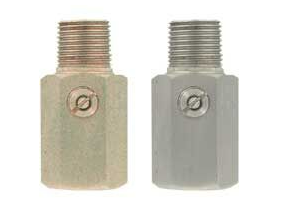What is a Pressure Snubber?
A pressure snubber is a device used to protect pressure gauges, sensors, and transmitters. As an example, they protect from sudden pressure spikes, pulsations, or surges that could damage the equipment or make pressure readings unreliable.

How do Pressure Snubbers work?
They work by evening out pressure fluctuations. It typically uses a porous material, a small orifice, or a piston to slow down the rate at which pressure reaches the gauge. Thus, by restricting the flow, it smooths out high-frequence pressure spikes. Undoubtedly, pressure snubbers extend the effective life span of the pressure gauge and improve the stability of the gauge’s readings.
What are the Different Types of Snubbers?
Pressure snubbers come in various types designed for different applications and pressure ranges. Each type of pressure snubber is chosen based on factors such as the system pressure range, flow requirements, and the desired level of damping for pressure fluctuations. Here are the main types:
- Adjustable – They allow for adjustment of the damping effect, typically through a screw or knob, to fine-tune the response to pressure changes
- Fixed Orifice – Have a fixed size orifice that restricts the flow of fluid. As a result, they can control the rate at which pressure changes are transmitted through the system.
- Piston – Use a piston mechanism to modulate fluid flow. Thus, provides effective damping over a wide range of pressures.
- Diaphragm – Uses a flexible diaphragm to absorb pressure fluctuations. Thus, making them suitable for applications where a more sensitive response is required.
- Restrictor – Similar to fixed orifice snubbers, restrictor snubbers use a precisely sized restriction to control pressure ranges.
Where are they Used?
Pressure snubbers can be found throughout numerous applications and industries. A few examples of which are that they are mostly commonly found in plumbing, industrial machinery, industrial applications such as steam, liquid, or gas, and HVAC systems.
